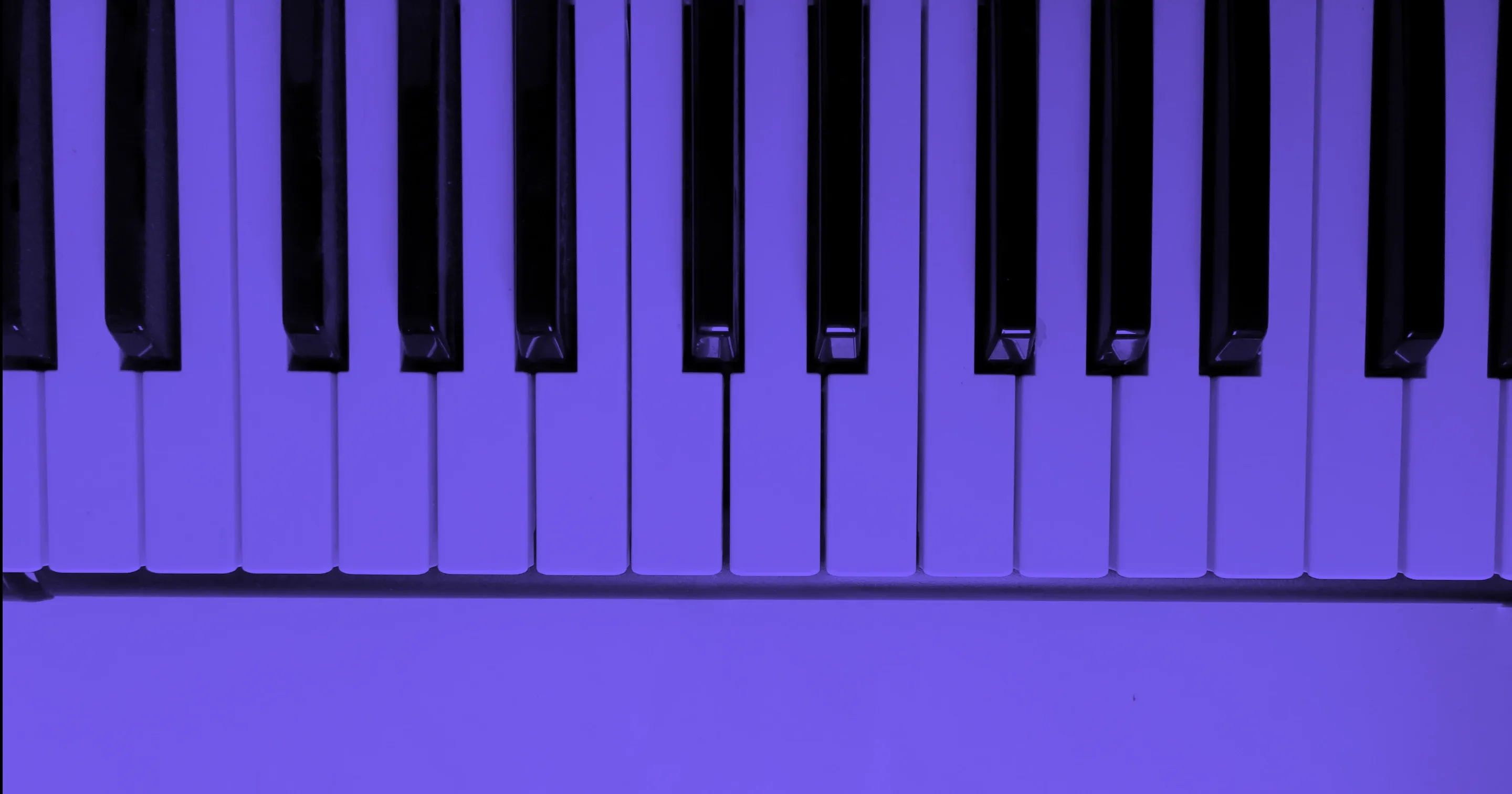
A Comprehensive Guide on Creating Seventh Chords in B Minor
Learn to build and use seventh chords in B Minor with this in-depth guide. Explore their harmonic functions, famous examples, and practical ways to enhance your music.
Introduction
Seventh chords are a fantastic way to add depth and complexity to your music, taking you beyond basic triads. They're created by adding a seventh note (seven notes above the root) to a triad, resulting in a richer, more nuanced sound.
While often associated with jazz, seventh chords, and other extended harmonies are used across a wide range of genres, from rock and blues to classical and contemporary music. They bring a sense of tension, warmth, and emotional depth. A solid foundation in music theory, particularly understanding the construction of extended chords, can elevate your chord progressions significantly.
This article will guide you through building all the seventh chords in B minor, explain their harmonic function, and explore how they're used in popular songs. By the end, you'll be equipped to use these chords in your own playing, whether for improvisation, composition, or simply to enhance your musical understanding.
B Minor Scale and Chord Construction
The notes of B Minor and their corresponding scale degrees are:
- B - Tonic (1st degree) - i
- C# - Supertonic (2nd degree) - ii° (diminished chord)
- D - Mediant (3rd degree) - III
- E - Subdominant (4th degree) - iv
- F# - Dominant (5th degree) - v and V
- G - Submediant (6th degree) - VIA - Subtonic (7th degree) - VII

In music theory, each note within a key corresponds to a scale degree, and these degrees are the foundation for building chords. Chords are constructed by stacking notes in intervals of major and minor thirds. Understanding the variations of these thirds – and how they combine to create different chord qualities – is crucial, especially when dealing with seventh chords.
Here's a breakdown of the intervals involved in chord construction:
- Root: The fundamental note (and tonal center) of the chord
- Third: This interval, a major or minor third above the root, determines the basic quality of the triad (major or minor)
- Fifth: This interval, a perfect, diminished (lowered by a half step), or augmented (raised by a half step) fifth above the root, further modifies the triad.
- Seventh: This interval, a major, minor, or (less common) diminished seventh above the root, when added to a triad, creates a seventh chord.
Altering any of these intervals by a half step generally introduces notes outside the diatonic scale of B minor.
Seventh chords are formed by adding a seventh to a triad. The specific type of seventh chord is determined by the combination of the triad type (major, minor, diminished, or augmented) and the type of seventh (major, minor, or diminished).
The diatonic seventh chords in B minor are: Bm7, C#ø7 (half diminished 7), Dmaj7, Em7, F#7, Gmaj7, and Amaj7. Each type of seventh chord possesses a unique sound and harmonic function. We will explore the diatonic seventh chords within the key of B minor in detail below. Following that, we'll examine the general characteristics and uses of each seventh chord type.
For a deeper dive into Chords in B Minor, take a look at the article “Chords in B Minor: A Comprehensive Guide” where we go in-depth on the topic.
Seventh Chords in B Minor and Their Functions in Music
I - B Minor 7
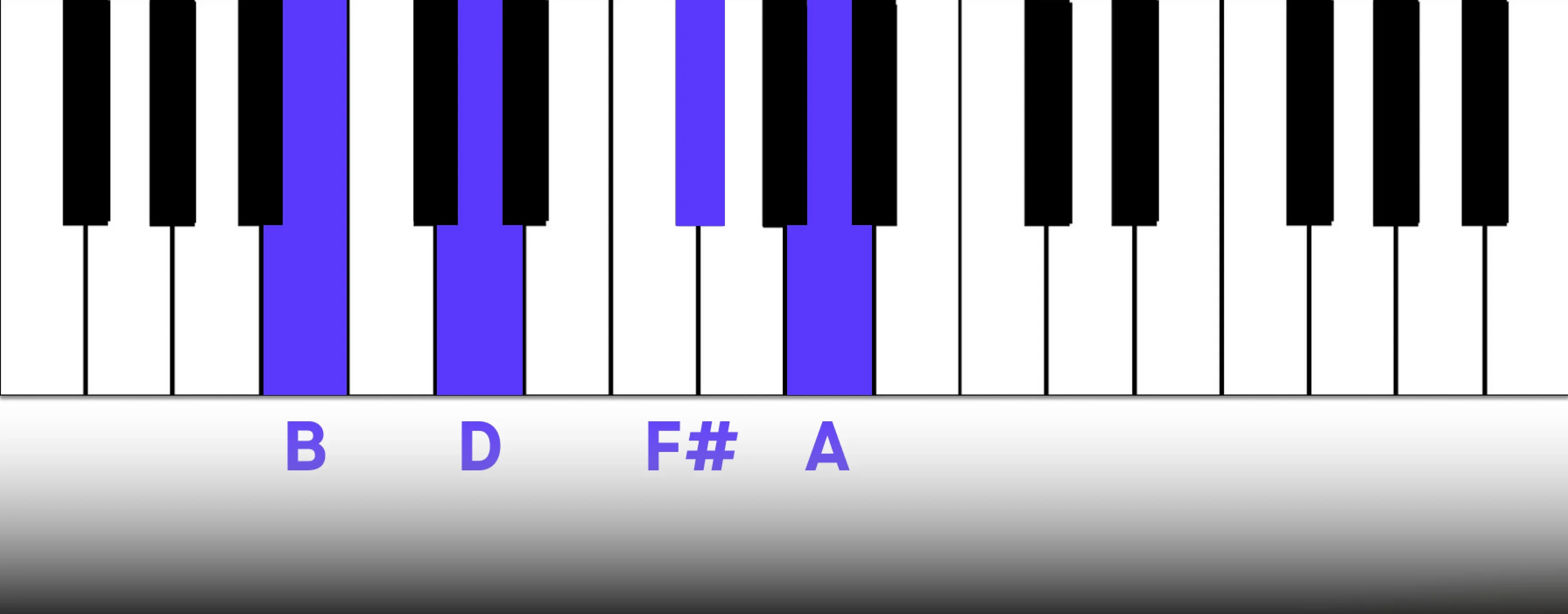
Bm7 functions as the tonic, which means it's often used at the beginning and end of musical phrases. It provides a strong sense of closure and arrival, acting as the harmonic home. <sup id=""> </sup>It can also be used as a point of departure, creating a sense of expectation and anticipation when alternating between the tonic and another chord, setting up a journey away from the tonal center before returning.
While other chords in the key may create tension or instability, the Bm7 serves as the stable harmonic anchor. Its role is crucial in establishing the key's identity and providing a sense of resolution and emotional depth, grounding the harmony and providing a sense of comfort and finality.
The addition of the seventh adds a layer of complexity and sophistication to the basic Bm triad. This minor seventh doesn't cause significant tension or dissonance; instead, it enriches the chord's color, adding a subtle yearning quality, a touch of melancholy that enhances the emotional resonance of the tonic.
However, inverted 7th chords of the tonic can cause a momentary sense of instability, which is useful when you don’t want to commit to a full resolution. This allows for more nuanced harmonic movement and avoids the feeling of constant, predictable closure.
ii° - C#m7b5 (Half diminished)
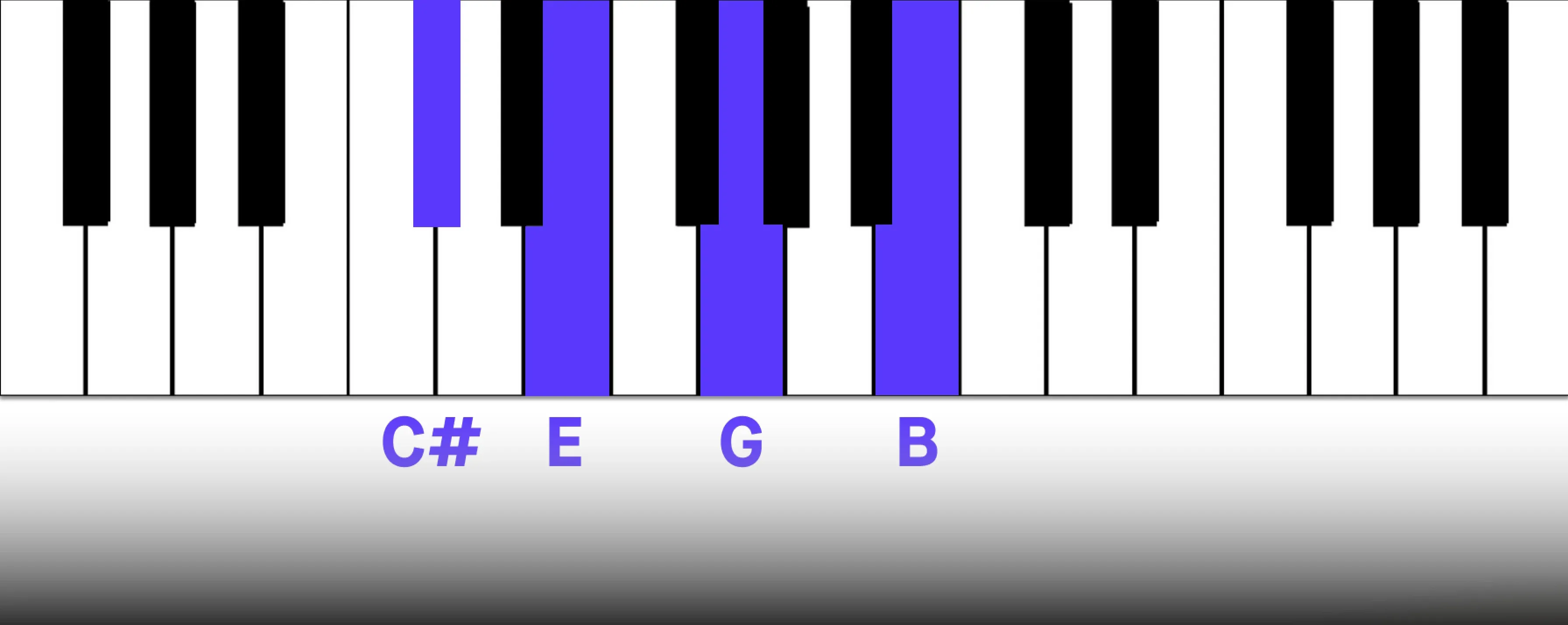
The half-diminished chord has a distinctive, tense, and somewhat dark character. Its half-diminished nature introduces instability and dissonance, which are typically resolved by moving to a more consonant and stable harmony, most often the tonic Bm, creating a satisfying sense of closure.
While commonly found in jazz, the chord’s darker and more complex sound adds a unique color and emotional depth to any musical context in B minor. It creates a sense of anticipation and dramatic tension, making its resolution to the tonic all the more powerful.
III - D Major 7
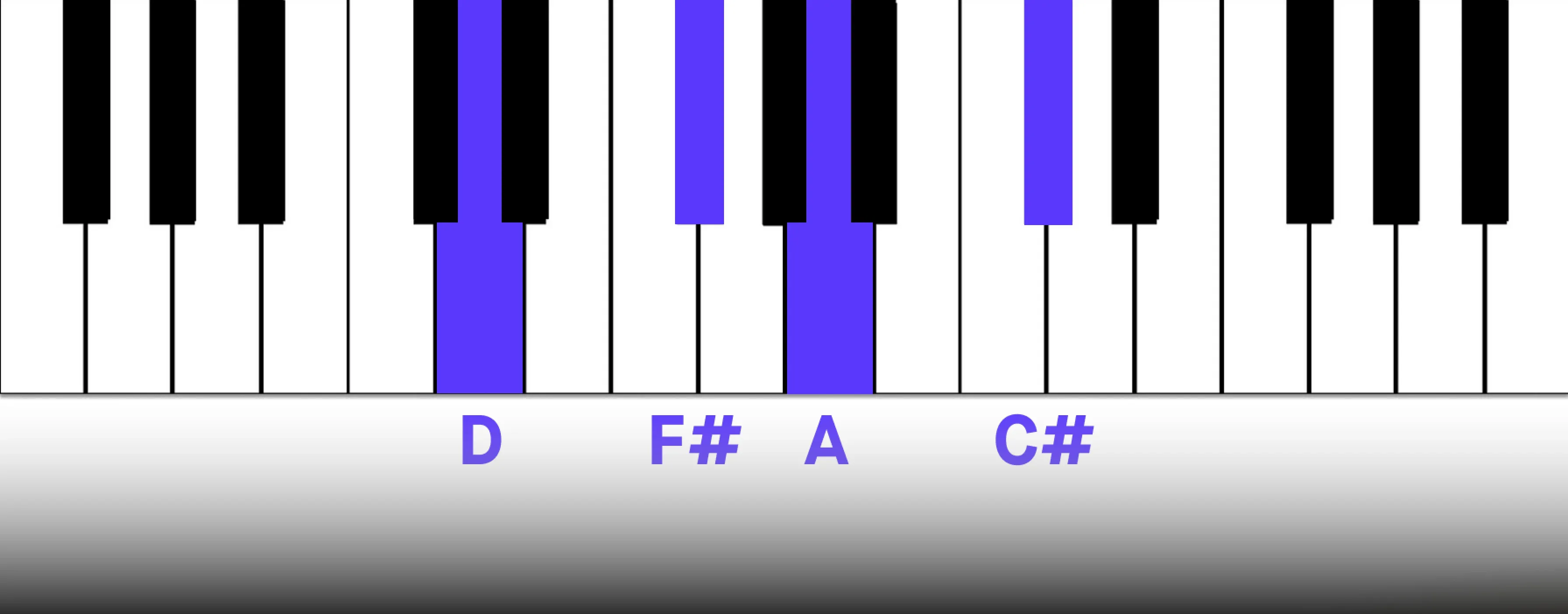
The Dmaj7 offers a contrasting brightness to the often heavy minor tonality associated with the B minor key. It provides a significant harmonic color shift, adding a sense of lift and hope. The chord offers an uplifting contrast to the tonic chord, which is good for creating harmonic interest, tension, and a sense of anticipation.
While it can resolve to the tonic, the sense of resolution is less forceful than a dominant chord. One of the primary roles of the major 7th mediant chord is to add color and harmonic interest rather than providing a strong sense of closure.
In other words, the Dmaj7 can be used to create a sense of growth or development within a musical phrase, adding a touch of optimism or reflection before returning to the more grounded minor chords of B minor.
On the third scale degree of a minor key, is where you find the relative major key signature. Therefore, the mediant can be used as a pivot point to modulate to D Major.
iv - E Minor 7
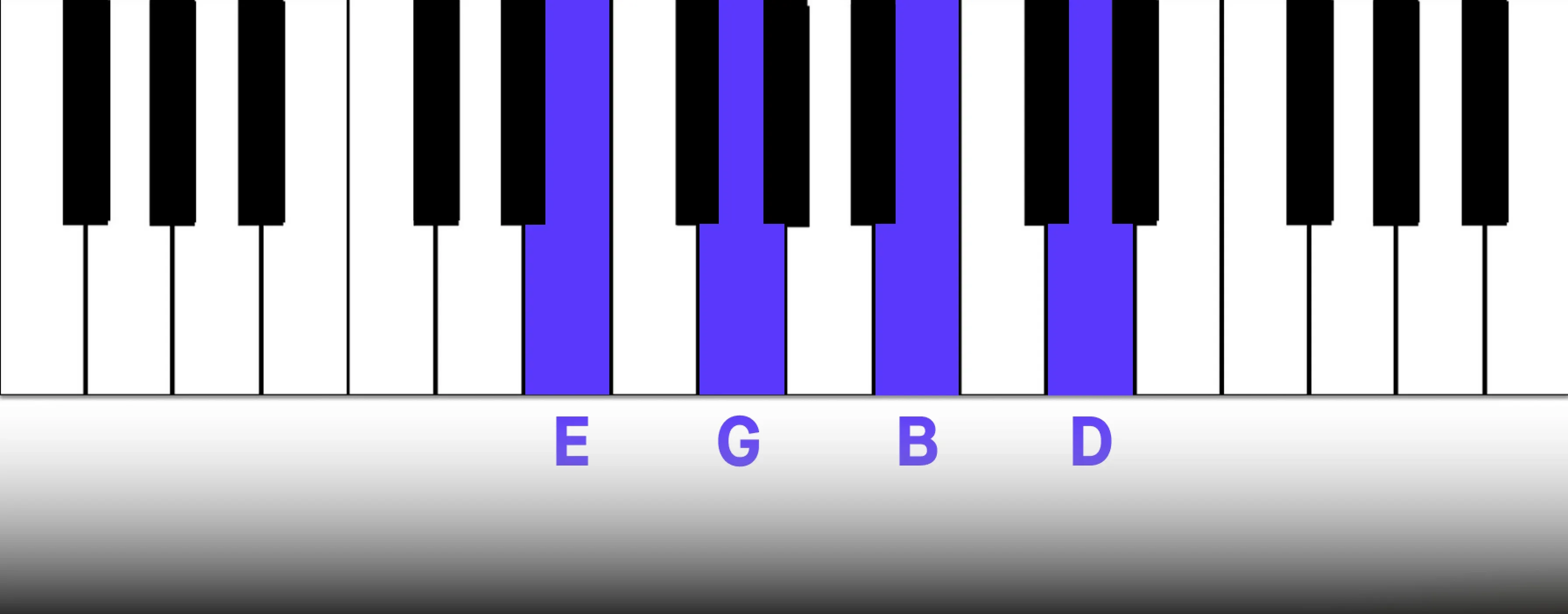
The Em7 chord in the key of B minor functions as the subdominant, providing a contrasting harmonic color and a sense of movement away from the tonic. Subdominant chords are versatile in nature, due to the perceived harmonic departure from the tonality of the key signature, creating a sense of harmonic interest and a desire for resolution.
Since the subdominant is a primary chord, it tends to lead to either the tonic or the dominant, the other two primary chords within any key signature. The movement from the subdominant to the dominant creates a strong sense of anticipation for the final resolution back to the tonic.
Minor triads with an added 7th, such as the Em7, are quite introspective and have a longing tonal character. While the minor 7th doesn’t add as much tension as, say, a dominant 7th chord, it adds just enough for the chord to feel like it ought to move somewhere. This can be used to convey that the story you’re telling is still developing, creating a sense of harmonic momentum and forward motion.
v - F# Minor 7
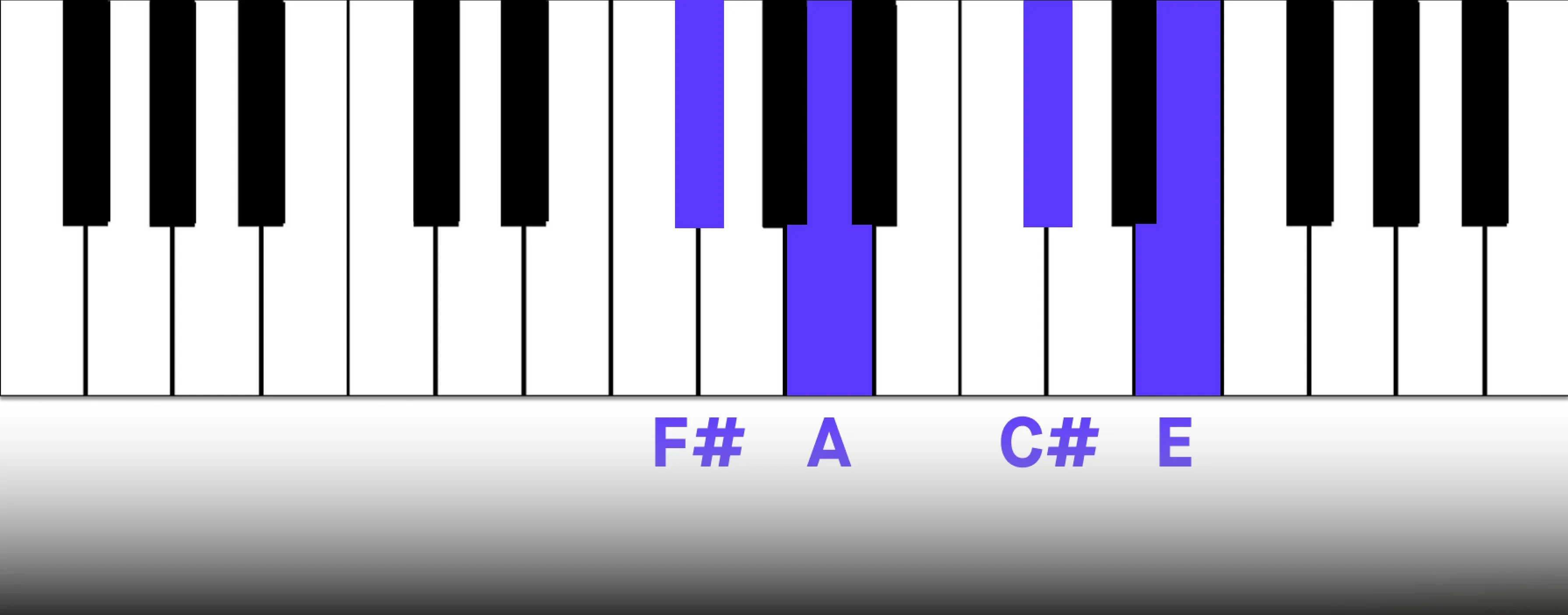
The minor dominant 7th (v7) is often used to create a more subdued or melancholic dominant sound compared to the major dominant (V7). It still provides a sense of harmonic drive, but with a slightly softer edge, making it less forceful and more introspective.
Common uses include leading into the tonic at the end of a phrase or section, creating a sense of closure; or to the submediant chord for a sense of harmonic development and a brief shift in tonal color.
V - F#7 (Dominant 7)
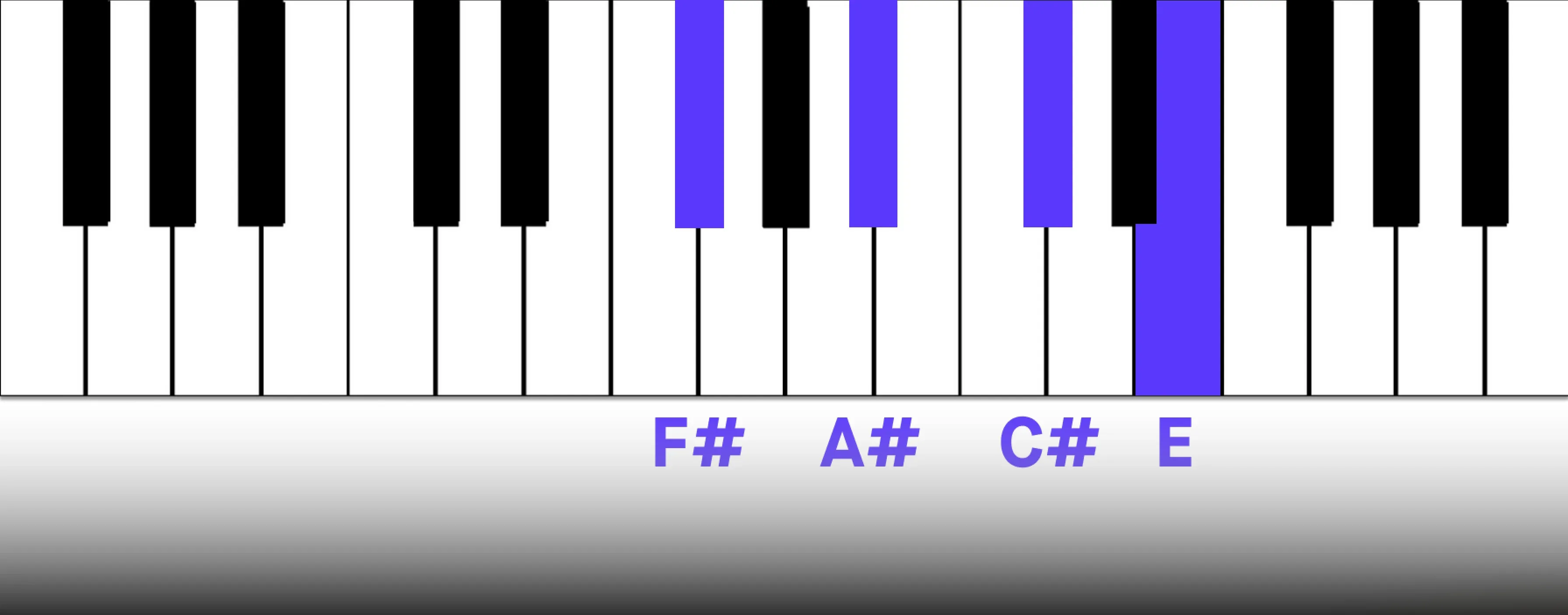
Even in a minor key, the major dominant 7th chord is commonly used, even though its major third is technically a chromatic note (outside the natural minor scale).
In minor keys, the minor dominant chord is frequently used to keep the chord progressions moving, providing a less intense dominant function. For more climatic and dramatic moments, the major dominant is often employed to create maximum tension and a stronger pull towards the tonic.
VI - G Major 7
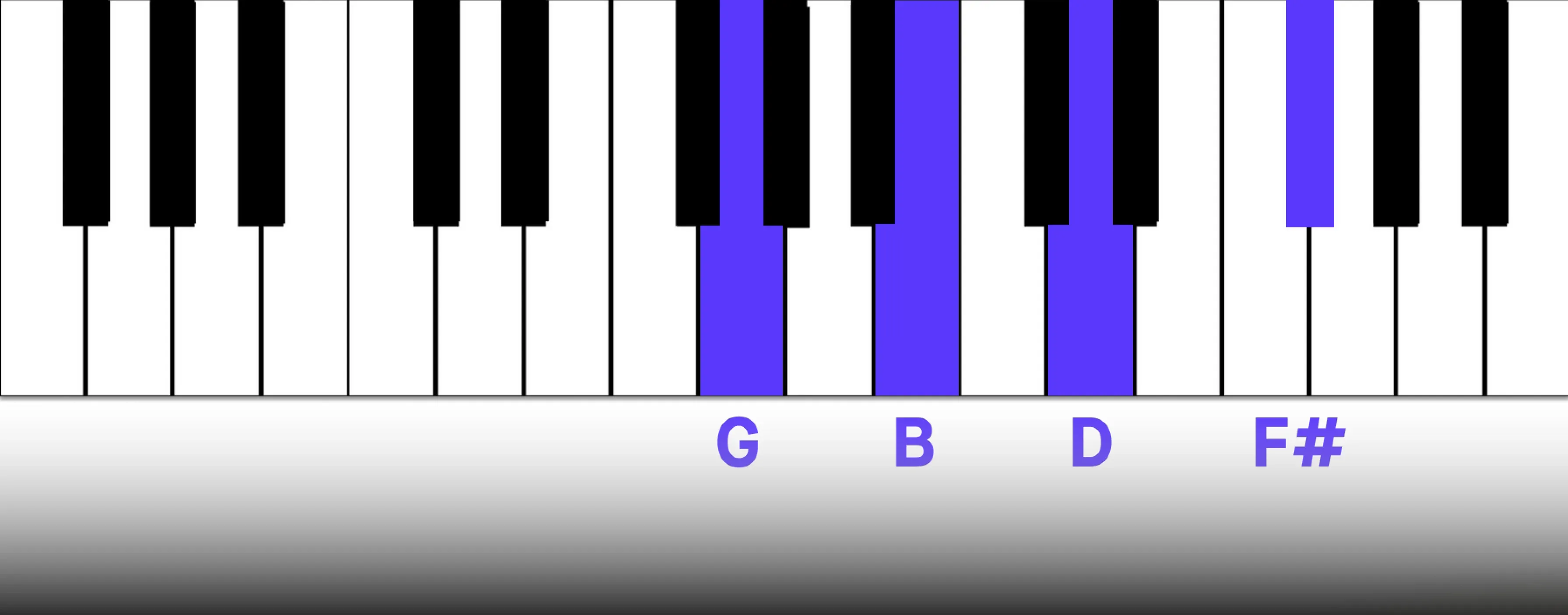
The Gmaj7 chord, as the submediant, introduces a unique and colorful element to the harmonic landscape. This chord, similar to the mediant, provides a sense of brightness and harmonic interest, creating a feeling of expansion within the overall harmonic structure.
This contrast with the darker tonality of B minor makes the G major 7th chord particularly impactful. Being a major chord in a minor key, it can also create a moment of harmonic surprise or unexpected brightness, adding depth and complexity to the overall musical texture.
Since it shares notes with the tonic, it’s often used as a brighter tonic substitution as a way to change the overall character of the chord progression, offering a less conclusive and more colorful alternative to the tonic.
A 7th chord on the sixth scale degree is particularly common in pop music to add a level of depth and harmonic intrigue, creating moments of harmonic color and complexity.
VII - A7
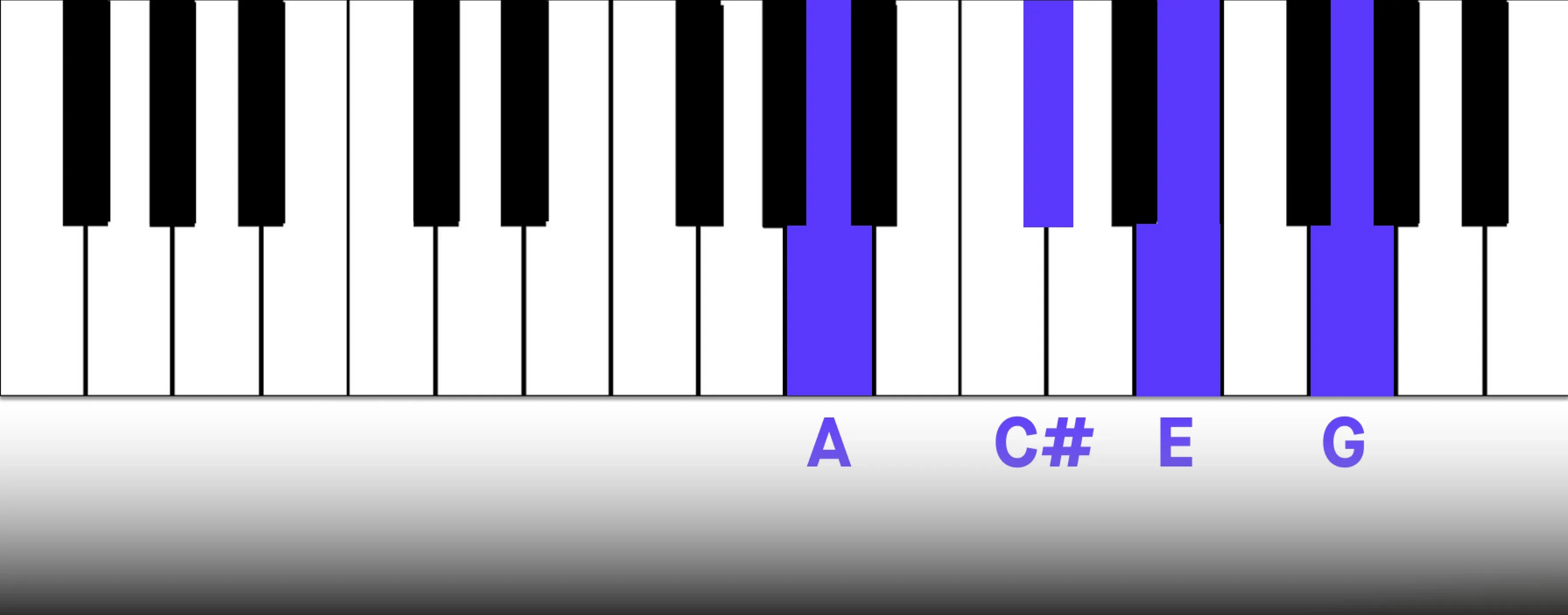
In B minor, the diatonic seventh chord built on the seventh scale degree is constructed like a dominant 7th chord. However, its function differs from a dominant seventh built on the fifth scale degree.
On the seventh degree, its role is often more predominant, meaning it frequently leads to the subdominant or the dominant degree of the scale within a harmonically stable progression.
Furthermore, the A7 chord plays a crucial role in modulating to the relative major key, D major. As the dominant chord of D major, it provides a natural and effective pathway for transitioning between these two keys. This dual functionality – its role within B minor and its pivotal position in modulating to D major – makes the VII7 chord a versatile and valuable chord for interesting chord progressions in B minor.
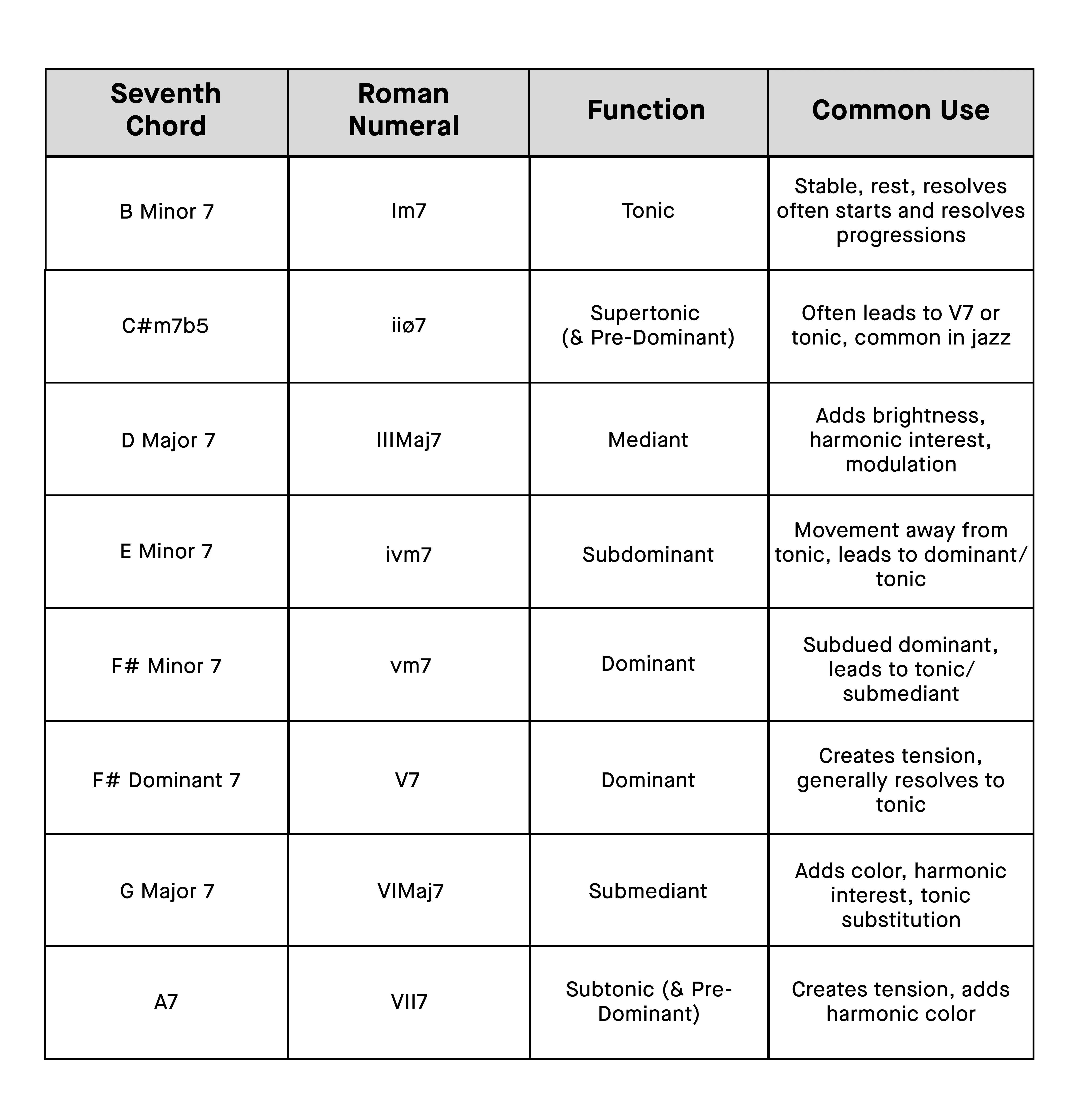
Learn how to put all the chords together in intriguing chord progressions by reading our article “A Comprehensive Guide to Crafting Chord Progressions in B Minor”.
Different Types of Seventh Chords
Major Seventh Chord
- Formula: Root - Major 3rd - Perfect 5th - Major 7th
- Notation: maj7, M7, △7, △
- Diatonic scale degree B Minor: Mediant (III), Submediant (VI)
- Sound & Function: The major seventh chord has a rich and sophisticated sound. While common in genres like jazz, pop, and R& B, its versatility makes it applicable across a wide range of musical styles.
Structurally, it's constructed by adding a major seventh interval to a major triad. This creates a chord that is fundamentally stable but contains a subtle yearning quality due to the major 7th creating a slight dissonance added on top of a major triad.
Dominant Seventh Chord
- Formula: Root - Major 3rd - Perfect 5th - Minor 7th
- Notation: V7
- Diatonic scale degree in B Minor: Not diatonic in the natural minor scale, but commonly used as an altered chord on the dominant position.
- Sound & Function: The dominant seventh chord, a primary source of harmonic tension, typically resolves to the tonic chord, creating a satisfying resolution known as a perfect cadence. This V7-i progression is fundamental to Western music and widely used across many popular genres.
While the diatonic dominant seventh chord occurs naturally only on the fifth degree of the major scale, dominant seventh chords are commonly used in minor keys as well. It also appears in other harmonic contexts.
A good example is the use of secondary dominants, which allow for the temporary tonicization of any chord within a key.
This tonicization is achieved by preceding the target chord with its own dominant seventh chord (built a perfect fifth above). This creates a temporary V7-I relationship, making the target chord sound like a temporary tonic, even though it's not the overall tonic of the key.
This technique adds harmonic color and complexity. For a deeper exploration of this concept, see our article "A Comprehensive Guide to Crafting Chord Progressions in B Minor".
In blues music, dominant seventh chords are frequently used on chords other than the dominant, notably the tonic and subdominant chords. This characteristic use of the dominant seventh on non-dominant chords contributes significantly to the distinctive blues sound, creating tension and release that is central to the blues idiom.
Minor Seventh Chord
- Formula: Root - Minor 3rd - Perfect 5th - Minor 7th
- Notation: m7, min7, -7
- Diatonic Scale Degree in B Minor: Tonic (i), Subdominant (iv), Dominant (v)
- Sound & Function: The minor seventh chord has a warm, smooth, and often melancholic quality, recognized for its introspective and sometimes longing character. This expressive nature makes it a versatile tool for conveying a range of emotions.
A particularly common application, especially of the ii7 chord, in major keys, is within the classic jazz standard progression ii7-V7-I. This progression is a cornerstone of jazz harmony.
The minor seventh chord's mellow sound lends itself well to creating a sense of gentle sadness or reflection.
Beyond its prominent role in jazz, the minor seventh chord is also frequently used on the sixth degree, in major keys, across various genres but particularly pop music. In this context, it often adds a layer of sophistication and emotional depth to the harmonic texture.
Half Diminished Seventh Chord
- Formula: Root - Minor 3rd - Diminished 5th - Minor 7th
- Notation: ø7, m7b5
- Diatonic Scale Degree in B Minor: Supertonic (ii°)
- Sound & Function: The half-diminished seventh chord has a dark, mysterious sound, commonly heard in jazz, blues, and funk. It adds depth and richness to chord progressions, and its inherent instability, due to the tritone between the root and the diminished fifth, creates a sense of yearning for resolution to a more stable and consonant harmony.
Generally, the chord is referred to as a"m7b5"(or by its symbol ø7).
It’s important to note that while the 7th in this chord is considered a minor third, it is actually the distance of a major third. This is because the fifth is lowered by a half step, creating a larger gap between the 5th and the 7th.
Diminished Seventh Chord
- Formula: Root - Minor 3rd - Diminished 5th - Diminished 7th
- Notation: °7, dim7
- Scale Degree in B Minor: vii° (harmonic minor)
- Sound & Function: The diminished seventh chord is characterized by its highly tense and unstable sound, a consequence of its symmetrical structure - four minor thirds stacked upon each other. This creates three tritones and a diminished seventh from the root.
This construction means the diminished seventh itself (the interval from the root to the seventh), located on the sixth degree of the harmonic minor scale, spans a major sixth. Adding another minor third above the diminished seventh would indeed complete the octave.
This symmetrical nature gives the diminished seventh chord a unique characteristic. A slight adjustment of a single note can change it into different dominant seventh chords.
For example, in B harmonic minor, by lowering the diminished 7th a half step you create a F#7 chord. By moving the diminished 5th down a half step you get Eb7. Altering the minor third down a half step creates a C7.
This inherent ambiguity makes the diminished seventh chord a powerful tool for modulation, facilitating smooth transitions between keys. It often functions as a passing chord, connecting other, more stable harmonies, or as a predominant chord leading to the dominant.
Minor Major Seventh Chords
- Formula: Root - Minor 3rd - Perfect 5th - Major 7th
- Notation: mMaj7, Minmaj7, mM7
- Diatonic Scale Degree in B Minor: (none)
- Sound & Function: The minor-major seventh chord has a distinctive, mysterious, and highly chromatic sound. Because it doesn't occur naturally within standard major or minor scales, it's less common in traditional diatonic harmony.
Its most frequent use is in"line clichés", where a sustained minor chord has one voice (typically the highest or lowest) moving chromatically downwards. This descending chromatic line against the static harmony creates the characteristic sound of the major-minor seventh chord.
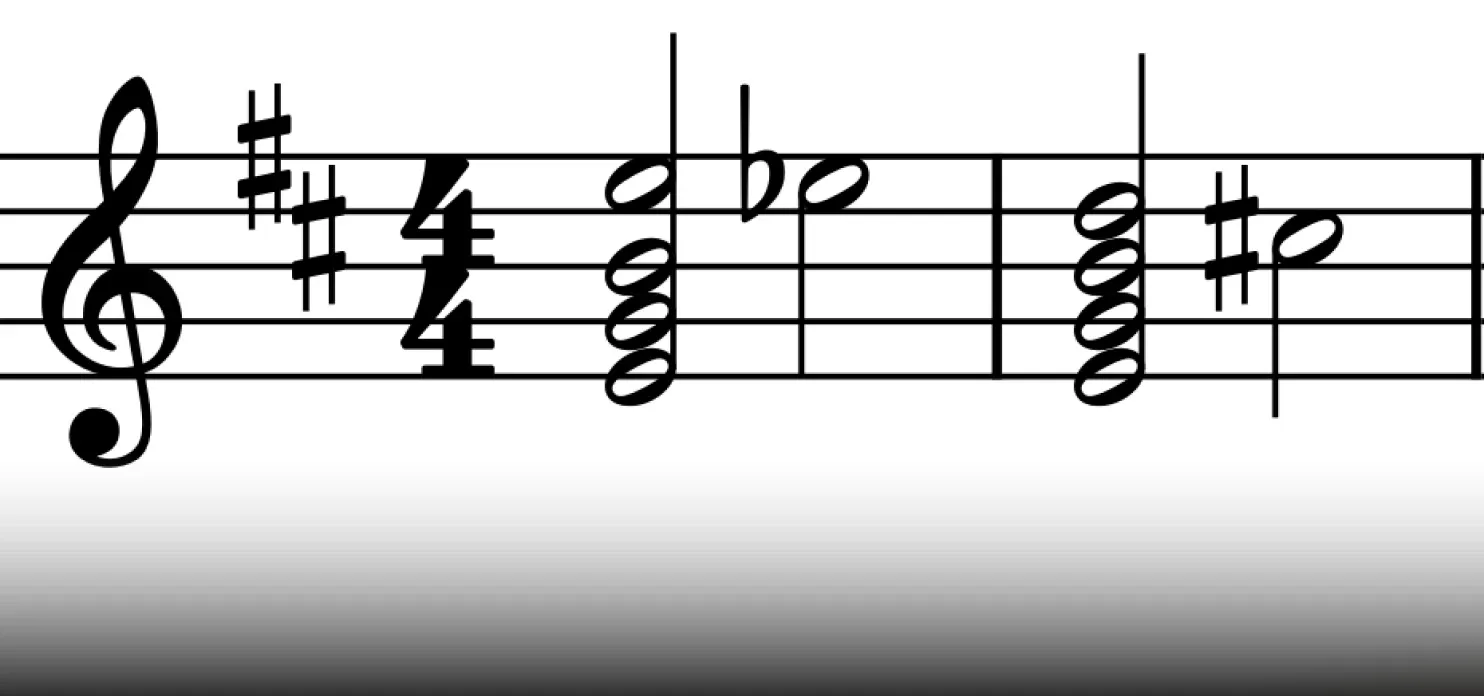
Modified Seventh Chords
Beyond the standard chord formation, a seventh chord can also be suspended or augmented. These types of seventh chords provide distinct harmonic flavors and textures, expanding the harmonic landscape and adding more tension to the music.
Suspended Seventh Chords
- Formula Sus4: Root - Perfect 4th - Perfect 5th - Minor 7th
- Formula Sus2: Root - Major 2nd - Perfect 5th - Minor 7th
- Notation: 7sus4. 7sus2
Seventh and suspended chords share a common trait: inherent harmonic instability. The combination of these qualities in a single chord intensifies this unstable character, creating a heightened sense of anticipation and movement.
Consequently, these hybrid chords are particularly effective as passing chords, adding color and dynamism to harmonic progressions. They also lend themselves well to harmonizing ascending or descending bass lines, creating a sense of melodic and harmonic motion.
A prime example can be heard in ABBA's "Happy New Year", where an ii7sus4 chord adds an interesting characteristic to the chord progression.
Augmented Seventh Chord
- Formula: Root - Major 3rd - Augmented 5th - Minor 7th
- Notation: maj7#5, Aug+7
The augmented major seventh chord is perhaps best notated as maj7♯5 to avoid confusion. The simpler term"augmented seventh"can be misleading, as it doesn't specify whether the interval of the seventh itself is augmented or if the fifth of the chord is augmented.
This chord, built upon an augmented triad with a major seventh added, possesses a unique tension. When used on the dominant degree, the augmented fifth acts as a strong leading tone, gravitating towards the major third of the tonic chord. This resolution creates a powerful sense of harmonic arrival.
Developing a strong understanding of chord sounds relies heavily on recognizing intervals. Our ear training and interval study guide provides helpful song examples for all intervals, both ascending and descending, to help you internalize these essential building blocks of harmony.
Chord Progressions using Seventh Chords in B Minor
VI (G) - III (D) - V7 (F#7) - VI (G) - III (D) - iv7 (Em7) - V7 (F#7)
The chorus to the Eagles’ “Hotel California” uses this chord progression, which features two distinct seventh chords. This is a great example of where the seventh chords add an extra layer of depth to the harmony.
Seventh chords aren't as harmonically resolved as major or minor triads, which makes the final chord of the progression feel less conclusive, and more suspended. This ambiguity perfectly complements the song's lyrical themes of mystery and entrapment, contributing significantly to its overall mood.
i (Bm7) - VI (Gmaj7) - i (Bm7/F#) - iv (Em add9) - VI (Gmaj7) - i (Bm7/F#) - iv (Em add9) - i (Bm)
Radiohead uses seventh chords and chord extensions to create an ambiguous atmosphere. The chord progression to “There There” lingers on the tonic for a couple of measures before moving to slightly less stable seventh chords and extended chords.
These chordal extensions cause harmonic instability, which makes the song feel unstable and ambiguous, without a clear harmonic direction. The eventual return to the tonic reinforces stability again.
This works well with the theme of the song of instability. “There There"is a prime example of how harmonic language can be used to amplify and enhance a song's emotional impact.
VI7 (Gmaj7) - iv7 (Em7) - v7 (F#m7) i (Bm)
Marvin Gaye’s classic “Ain’t No Mountain High Enough” uses this exact chord progression in the chorus. It’s worth noting the progression starts on the sixth scale degree, which is also a seventh chord.
This injects the song with energy and a sense of harmonic instability that needs to move on to more harmonic stability. Instead of resolving directly to the tonic, however, the progression cleverly moves to the subdominant and then the dominant. This harmonic movement maintains the energy and drive. It creates a powerful push forward, propelling the song's emotional arc.
The progression only returns to the tonic briefly at the end. Furthermore, the tonic is the only chord in the chorus that is not a seventh chord. This enforces the key signature and grounds the chord progression in a way that seventh chords alone do not.
ii (C#ø7) - V7 (F#7) - i (Bm7) - i (Bm/A) - #vi (G#ø7) - V7/v (C#7) - V#5 (F#maj7)
This chord progression, featuring several chromatic chords, creates a complex and intriguing harmonic landscape. It appears in the bridge of Azymuth's"Cascade of the Seven Waterfalls". The progression begins with the familiar jazz cadence of an ii-V-i, using a half-diminished chord on the second degree, immediately establishing a sophisticated harmonic atmosphere.
The progression also features a Bm11. As is common with extended chords of this size, the 3rd and 5th are often omitted, resulting in a unique voicing that effectively creates an A major triad over a B in the bass.
Next, the progression takes an interesting turn with a chromatic mediant modulation, moving from the tonic to G#. This is followed by a secondary dominant that briefly tonicizes the dominant chord (F#).
The dominant chord that concludes the progression features a major 7th, creating an F#maj7 rather than a dominant 7th. This subtle difference adds a unique flavor to the final chord.
For more information on incorporating this type of chromaticism into your own chord progressions, see our article"A Comprehensive Guide to Crafting Chord Progressions in B Minor".
i (bm) - iv7 (Em7) - VII (Amaj7)
This chord progression uses a seventh chord on the subdominant, adding depth and intrigue to an already harmonically interesting chord. The subdominant itself creates a departure from the tonic's tonality, and the addition of the seventh further enriches its sound, adding another layer of harmonic color.
While a subdominant chord often leads naturally to the dominant, this progression surprises the listener by substituting a major VII chord. This unexpected choice adds a touch of harmonic color to what would otherwise be a straightforward three-chord progression. It demonstrates how even simple harmonic structures can be made more interesting through the strategic use of chord extensions and less common chord substitutions.
This chord progression is used in “Satellite” by Lena.
i (Bm) - i (Bm/A) - VI (Gmaj7) - bI (Bb) bII (C)
Bruno Mars' "Gorilla" showcases some intriguing harmonic choices. This particular progression ventures beyond the diatonic chords of B minor. The Gmaj7 serves as a smooth bridge between the more conventional harmonies and the two final, chromatically altered chords. The seventh in the Gmaj7 adds a touch of sophistication, softening the transition to the flattened tonic and supertonic chords and making them feel less abrupt.
i (Bm) - III (Dmaj7) - VI7 (Gmaj7) - V (F#) - III (Dmaj7) VI (Gmaj7)
Deadmau5's "I Remember" is a sonic journey that masterfully utilizes seventh chords to create a rich and immersive soundscape. As a lengthy song, the strategic use of these extended harmonies helps maintain listener interest and prevent the music from becoming repetitive or predictable. The seventh chords add depth and complexity, contributing to the track's evolving and engaging character.
How to Practice Seventh Chords
Begin your exploration of seventh chords in B minor by playing each chord in its root position. This will build your comfort and familiarity with these four-note harmonies. Focus on smooth transitions between each chord, striving for seamless voice leading.
To truly internalize the sound of each chord, practice arpeggiating its notes. This technique, where the chord tones are played individually, is invaluable for understanding the melodic possibilities within each harmony.
Arpeggios are often used in melodies to imply the underlying chord extensions, or in fingerstyle guitar and other plucked/picked instrumental styles.
Here are some exercises to develop smooth chord transitions:
Consistent practice of these techniques will solidify your command of seventh chords in B Minor, enriching your harmonic vocabulary and improving your improvisational skills.
Musiversal: For Musicians, by Musicians
Transform your musical vision into reality with Musiversal. We connect you instantly with over 90 professional musicians and engineers, all available at the click of a button. Our Unlimited subscription grants you access to unlimited recording sessions with any of the artists on the roster.
Bring Your Songs to Life
Have your music recorded by top-tier musical talent. Whether you're looking for the perfect drummer, cellist, guitarist, string player, pianist, wind player, bassist, beat maker, vocalist, or any other instrument, Musiversal has you covered. Simply schedule a session at your convenience and collaborate in real-time with your chosen musicians via a live session link. This ensures your music sounds precisely as you envision it.
Songwriting Support from Start to Finish
Struggling to develop a song idea? Our expert songwriters can help. From crafting lyrics, chords, and harmonies to refining existing compositions, they'll help you at every step of the songwriting process. Whether you need assistance with structure, melody, or simply a collaborative partner, our songwriters are ready to help you create truly exceptional music.
Polish Your Tracks for Release
Once your tracks are recorded, our professional mixing and mastering engineers will put the final touches on your music, ensuring a polished and release-ready sound.
Beyond the Studio: Your Music Resource
Expand your musical knowledge with the Musiversal blog, updated weekly with expert insights on music theory, songwriting, production, gear, marketing, and distribution.
Your Music, No Limits.
Join the Waitlist